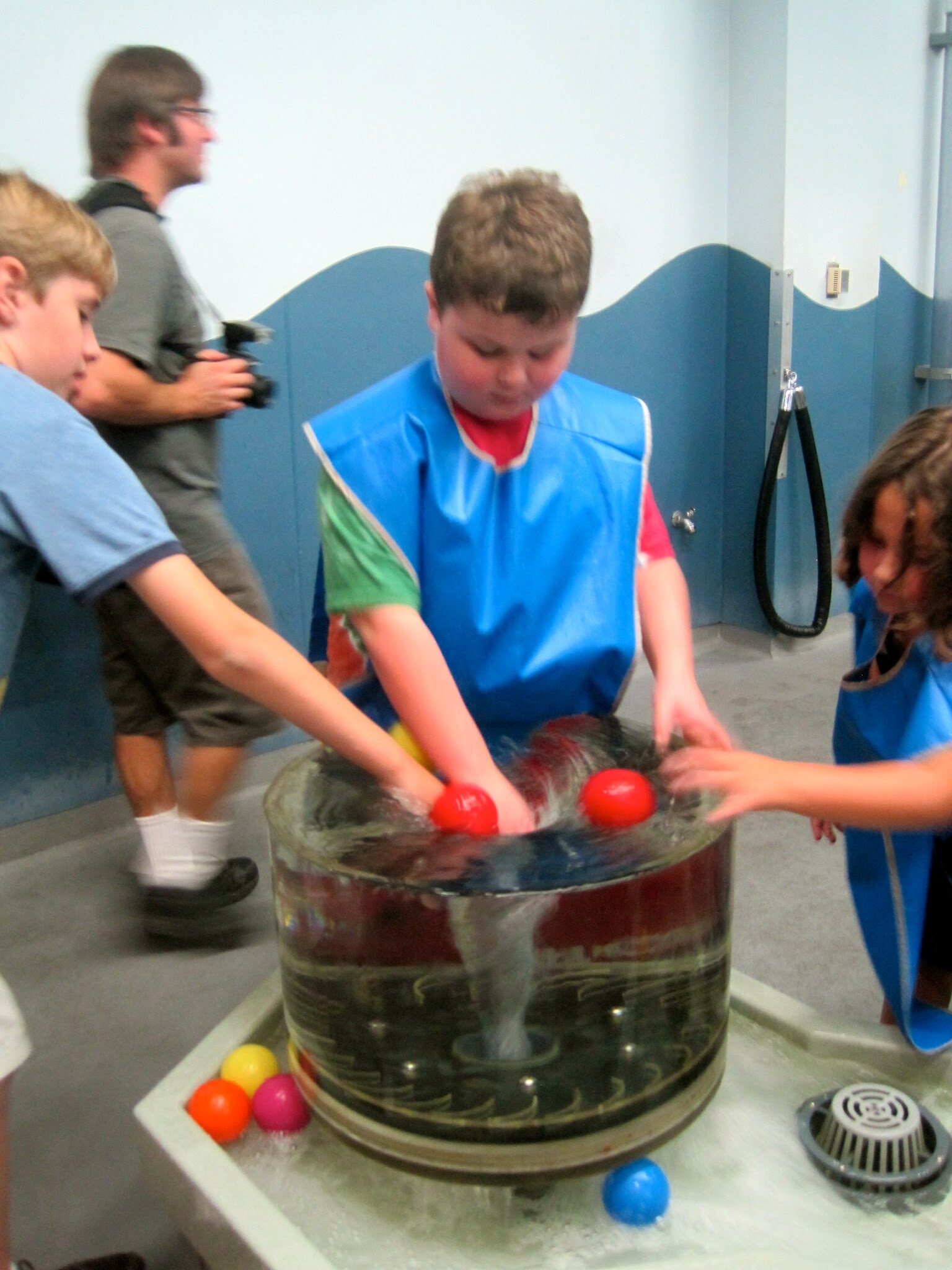Shannon Des Roches Rosa
 |
| Parallel exploration is a very reasonable
and comforting way to socialize |
We’re not a family that stays home. We’re a family of excursioners. Still, there are places my eleven-year-old son adores yet which we avoid completely, because our usual techniques of “go early or go off season” can’t guarantee him a good time.
One of those local places is the sensory and exploration wonderland known as the Children’s Discovery Museum of San Jose — there is no time in which it is not thronging with tiny shrieking moppets, and kids Leo’s age are generally perceived as Too Big. Which is why I am so glad the CDM recently held their second after-hours Play Your Way event — essentially a private party for Leo and his crew. As my co-editor Jen Myers wrote about the evening at Dandelion:
“It is an almost obstacle-free evening set up for Jack, and for his friends. The number of people invited to the museum was limited, which makes the space much easier to navigate with a wheelchair, and there is a lesser chance that Jack will drag his hands across another person when we are walking. The museum staff created quiet spaces for kids who needed some down time, and there were icons near each of the areas so parents could create a social story if that is their kid’s thing. The staff was expecting us, and our particular group of whoops and stims. Friendly, inviting, it was exactly how a kid’s museum should be.”
Many of those modifications made a huge difference for Leo as well, especially the quiet areas/rooms in which Leo could grab and squeeze armful-sized bean bags and then loll about on faux-furry throw rugs when the excitement of Just Getting to Play YEAH! became overwhelming.
Here is what else made the Play Your Way event work for Leo, and so many of the other kids we observed:
1) Fewer people. Leo got to explore most exhibits immediately, without having to wait in line. And because he wasn’t anxious about crowds and their overwhelming chaos & noise, he relaxed and started to experiment. He’s the one who figured out how to blow semi-bubbles using this bubble juice trough:
2) Large-scale sensory fun. Leo has a personal push-pin box, it is one of his favorite toys ever. But look how much more fun it is to have an entire push-pin wall:
3) Being around people who get Leo. The Play Your Way event was strictly for children with disabilities and their families. That meant no one rushed Leo, no one pushed him to finish or just get through any of the exhibits so they could have their turn. Observe the following video of Leo playing with a water vortex. First he enjoys the feeling of the water, then he steps back and just looks at the vortex for a few beats … and then he starts experimenting with dropping in plastic balls. If he hadn’t had the space to step back and think — if he’d been surrounded by yippy impatient toddlers and their yappy hovering adults — he probably wouldn’t have moved on to his next phase of experimenting and exploration.
 |
| A whole ambulance all to
himself — so fun when sans emergency |
(I also have to note that every time Leo went bounding into someone else’s space, folks recognized that he did so out of pure exuberance, and were consistently kind and understanding. As we tried to be, when the reverse scenarios occurred.)
4) Getting to explore big vehicles! I don’t know how you or your child feel about big vehicles, but Leo adores them. Getting to hang out and investigate a real fire truck, getting to lounge on the fainting-couch-like gurney in a real ambulance, well, that was a little slice of heaven for our boy.
 |
| Climbing at the Palo Alto
Junior Museum and Zoo |
The Children’s Discovery Museum is not the only local place that holds disability-friendly events. San Francisco’s Exploratorium held an autism-friendly event in 2009, to help gauge how to make their new space more ASD-friendly. The Palo Alto Junior Museum and Zoo has opened its doors three times in the past year or so for disability-friendly Super Family Sundays. How great would it be to see events like these at Cal Academy or Monterey Bay Aquarium — especially if they welcomed people with disabilities of all ages?
Does your area’s museums or science centers have disability-friendly events? Have you gone? Do they work? What makes these events work (or not work) for you or your family?